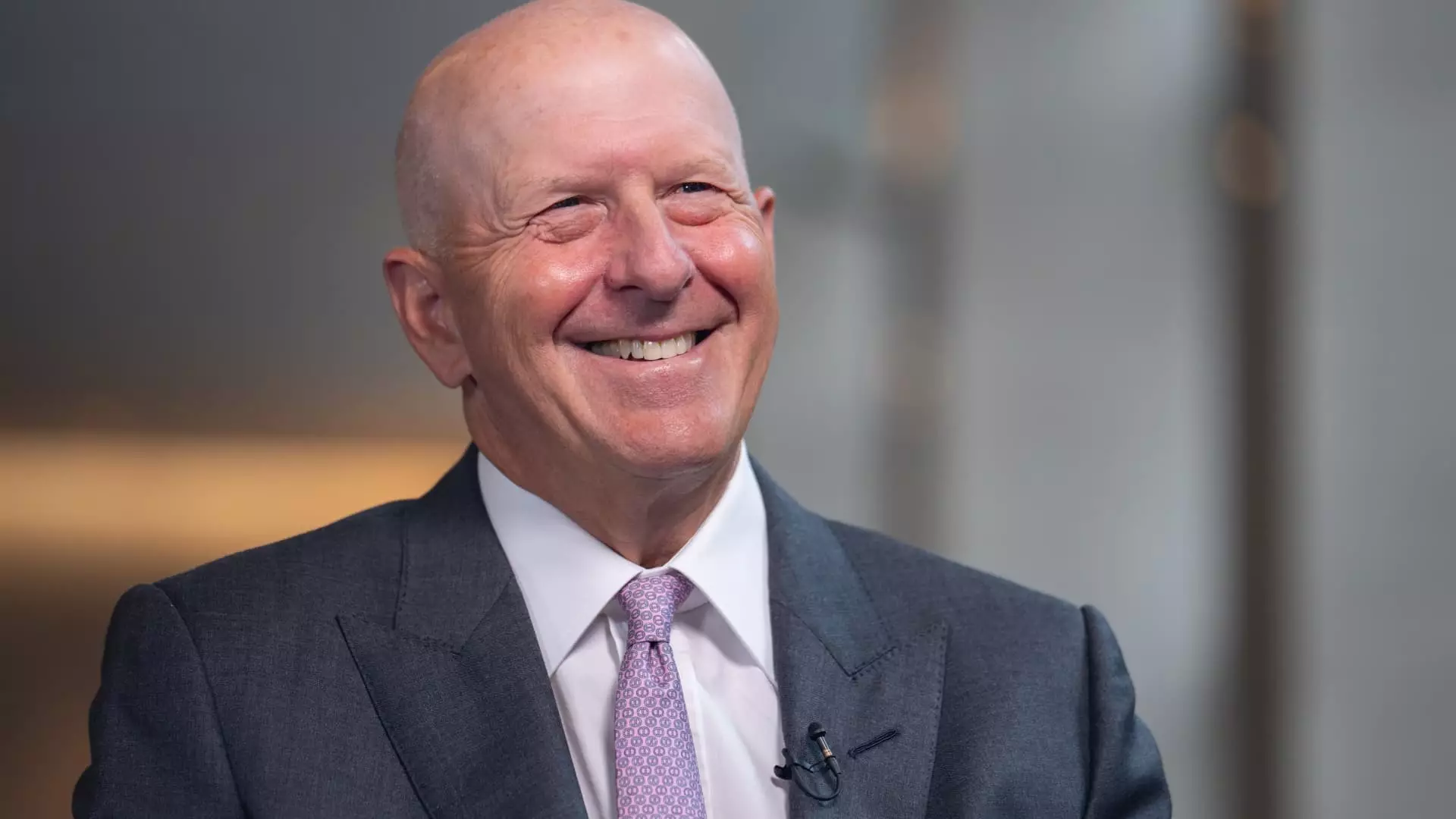In its latest financial report, Goldman Sachs showcased a remarkable performance for the third quarter, exceeding market predictions for both profit and revenue. The investment banking giant reported earnings of $8.40 per share, significantly higher than the estimated $6.89 by analysts from LSEG. Revenue also saw a commendable increase, reaching $12.70 billion, outpacing the forecast of $11.8 billion. Compared to the same quarter last year, the bank’s profit surged by 45%, amounting to $2.99 billion. This growth is notable in the context of recent economic adjustments, as the past two years have posed challenges due to the Federal Reserve’s interest rate hikes.
As the Federal Reserve begins to ease its monetary policies, Goldman Sachs finds itself in a favorable position, potentially reaping the benefits as corporations are encouraged to pursue growth strategies. Following a period of hesitance among companies regarding acquisitions and capital raising, an improving market environment signals a renewed appetite for investment, benefiting firms like Goldman Sachs. CEO David Solomon emphasized this positive shift, highlighting the bank’s ability to navigate through turbulent financial waters and emerge stronger.
A closer look at the individual segments reveals a particularly strong performance in equities trading. This sector posted an impressive 18% revenue increase, totaling $3.5 billion, which not only surpassed Goldman’s own forecasts but also exceeded analyst expectations by over half a billion dollars. The primary drivers of this success were thriving activities in derivatives and cash trading. Conversely, fixed income trading faced a downturn, slipping 12% from the previous year, though it still managed to slightly outpace analyst estimates, ringing in at $2.96 billion.
Investment banking emerged as another critical growth area, with a revenue increase of 20% resulting in $1.87 billion, which comfortably surpassed the estimate of $1.62 billion. This sector’s resurgence is largely attributed to robust debt and equity underwriting activities, along with a healthy queue of pending deals that signals continued momentum. Additionally, the asset and wealth management segment contributed significantly to total revenue, achieving a 16% increase to $3.75 billion. This upsurge is primarily due to rising management fees and favorable investment performance.
Goldman Sachs isn’t alone in this positive trajectory. Competitors like JPMorgan Chase and Wells Fargo have also reported exceeding expectations, buoyed by robust trading and investment banking performance. These developments not only illustrate a competitive recovery among major financial players but also highlight a broader trend of improving market conditions. As these giants adapt to the current economic landscape, their performances will be crucial indicators for the overall health of the investment banking sector moving forward.
Goldman Sachs’s third-quarter results signal a revival in the investment banking industry, supported by favorable market dynamics and effective strategic execution. With the Federal Reserve’s easing measures providing a conducive environment, the outlook for such financial institutions appears increasingly optimistic.

